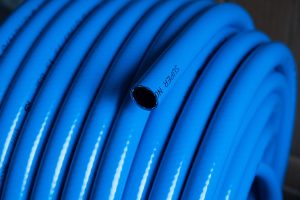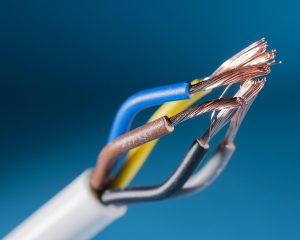What are the applications of polyethylene wax?2
With the advancement of technology and society, chemical material products are increasingly applied in people’s daily lives, and polyethylene wax, as a commonly used chemical material, has an exceptionally wide range of applications.

Polyethylene wax has low viscosity, high softening point, and good hardness, making it an excellent lubricant that enhances the production efficiency of plastic processing. It exhibits excellent moisture resistance at room temperature, strong chemical resistance, and superior electrical properties, optimizing the appearance of finished products. As a softener and lubricant for natural or synthetic fibers, polyethylene wax improves wear resistance, tear strength, wrinkle resistance, and sewing performance in wrinkle-free clothing, while reducing needle cutting and adjusting tactile sensitivity.
Polyethylene wax is a low-molecular-weight polyethylene homopolymer or copolymer widely used in coatings. Its primary functions in solvent-based coatings include: matting, anti-sagging, thixotropy, excellent lubrication and processability, and metal positioning.
√ Papermaking
During the paper production process, polyethylene wax can enhance the gloss and hardness of paper, improve water and chemical resistance, and increase the aesthetic appeal of the paper. Polyethylene wax slurry is a colloid that achieves an activated and dispersed state through high-shear deflocculation. Its advantages include preventing hard sedimentation, minimal impact on gloss, excellent viscosity stability, and low temperature sensitivity.

√ Adding polyethylene wax to paraffin improves its performance
Excellent electrical insulation properties, when added to insulating oil, paraffin wax, or microcrystalline wax, increase the softening temperature, viscosity, and insulation performance. It can be used for cable insulation and as a moisture-resistant coating for capacitor and transformer windings.
√ Polyethylene wax is used for PVC pipes and profiles
PVC pipes and profiles produced from pure polyethylene wax are smooth and glossy. Since polyethylene wax has a high softening point, it only melts into a liquid under high temperatures. If the viscosity of PE wax is high, dispersion is poor, but gloss is excellent. Conversely, if the viscosity is low, dispersion is good, and gloss remains acceptable. The choice of suitable PE wax should be based on the varying needs of different customers.

√ Masterbatch,
Polyethylene wax serves the functions of [dispersion, lubrication, and brightening] when used in masterbatch
√ Composite Stabilizer
Polyethylene wax is used in composite stabilizers to enhance dispersion performance and prevent dust formation
√ Hot-melt adhesive
Polyethylene wax is used in hot-melt adhesives to improve heat resistance and adjust viscosity

√ Hot-melt road marking paint / road marking paint
Polyethylene wax is used in hot-melt road marking paint/road marking paint to improve heat resistance and adjust viscosity,
√ Rubber
Polyethylene wax is used in rubber to improve processing performance and carbon dispersion
√ Cable material
Polyethylene wax is used in cable materials to achieve [increased filling, extrusion]

√ Ink
Polyethylene wax is used in inks to achieve [anti-settling, gloss, and abrasion resistance]
√ Masterbatch Filler
Polyethylene wax is used in filler masterbatches to improve heat resistance, act as a gelling agent, and enhance transparency
√ Candle
Polyethylene wax is used in candles to enhance hardness, gloss, and abrasion resistance

√ Plastic Additives
Polyethylene wax is used in plastic additives to improve wettability, release, and dispersion
In addition, PE wax can be used to manufacture shoe polish,crayons, cosmetics, and leather agents.
Advantages and Disadvantages of Polyethylene Wax (PE Wax)
Polyethylene wax (PE wax), as an important chemical material, has extensive applications in various fields, but it also possesses some inherent advantages and disadvantages.
Advantages
- Excellent lubrication performance:
PE wax exhibits excellent external lubricity and strong internal lubrication effects, significantly enhancing the processing efficiency of materials such as plastics and rubber.
- During processes such as extrusion, calendering, and injection molding, it can prevent and overcome adhesion in films, pipes, and sheets, improving the smoothness and gloss of the finished products.
- Excellent thermal and chemical stability:
PE wax exhibits excellent thermal stability and low high-temperature volatility, enabling it to maintain stable performance under certain high-temperature conditions.
- At the same time, it also possesses strong resistance to chemicals, capable of withstanding erosion from various chemical media.
- Improve product performance:
As a lubricant for cable insulation materials, it enhances the diffusion of fillers, improves the extrusion molding rate, increases mold flow, and facilitates demolding.
As a rubber processing aid, it also enhances the dispersion of fillers, improves extrusion molding rates, and increases mold flow.
In the field of pigments and paints, it can serve as a carrier for pigments, improve wear resistance, prevent pigment settling, and act as a leveling agent.
- Enhance material aesthetics:
In paper manufacturing, PE wax enhances the gloss, durability, hardness, and abrasion resistance of paper, improving its aesthetic appeal. In the textile industry, it serves as a softener and lubricant for natural or synthetic fibers, improving wear resistance, tear strength, and other properties.
- Wide Applicability:
PE wax can be widely used in the production of color masterbatches, granulation, plastic steel, PVC pipes, hot-melt adhesives, rubber, shoe polish, leather brighteners, cable insulation materials, floor wax, plastic profiles, ink, injection molding, and other products.
Disadvantages
- Limited heat resistance:
The heat resistance of PE wax is not particularly high, and its operating temperature generally does not exceed a certain range. In high-temperature environments, performance may degrade, leading to deformation or melting, which limits its application in high-temperature casting and high-temperature settings.
- Insufficient mechanical strength:
The mechanical strength of PE wax is not particularly high, especially when subjected to long-term loads at room temperature, where deformation (creep) is prone to occur. This characteristic may become a limiting factor in certain applications requiring higher mechanical strength.
- Susceptible to environmental factors:
The performance of PE wax is susceptible to environmental factors, such as changes in temperature and humidity, which may affect its performance. This instability could lead to issues in certain specific usage environments.
- Corrosion resistance:
PE wax has relatively weak resistance to chemical media such as acids and alkalis, making it prone to erosion and thus affecting its service life. This limits its application in scenarios requiring high corrosion resistance.
In summary, polyethylene wax exhibits significant advantages in lubrication performance, thermal stability, chemical stability, and product performance improvement. However, it also has drawbacks such as limited heat resistance, insufficient mechanical strength, susceptibility to environmental factors, and corrosion vulnerability. In practical applications, a balance and selection based on specific scenarios and requirements are necessary.
We are experienced in polymers, chemicals and modified plastic materials for more than 23 years. If there is any inquiry, welcome to contact us and Whatsapp: 0086 13817820852.
#Polyethylene wax #Matting#Anti-sedimentation#Thixotropy#Excellent lubrication#Easy processing#Metal positioning#Shoe polish#Candle#Crayon#Cosmetics#Leather agent#Hot melt adhesive




